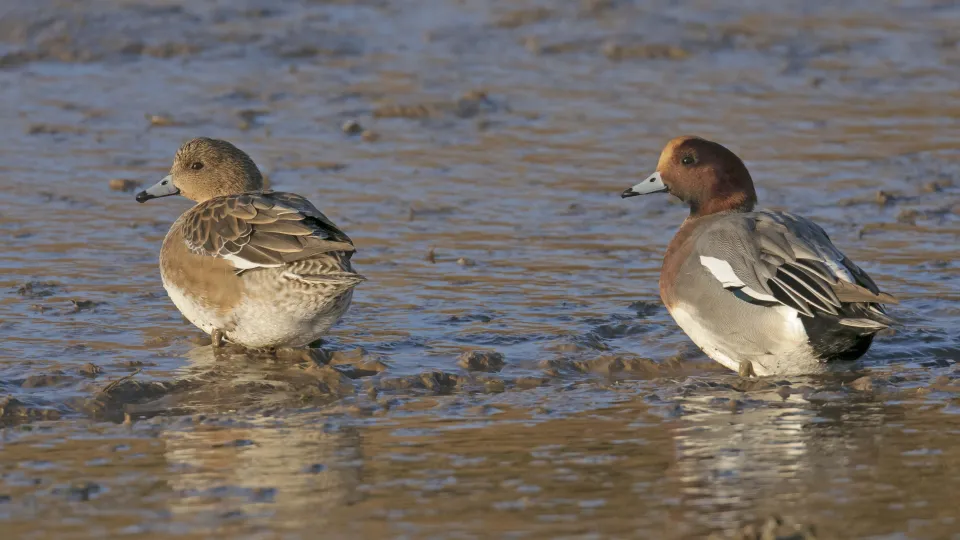
Wigeon
The wigeon is a colourful duck that can often be spotted wheeling round our winter skies in large flocks. A dabbling duck, it surface-feeds on plants and seeds in shallow waters.

The wigeon is a colourful duck that can often be spotted wheeling round our winter skies in large flocks. A dabbling duck, it surface-feeds on plants and seeds in shallow waters.
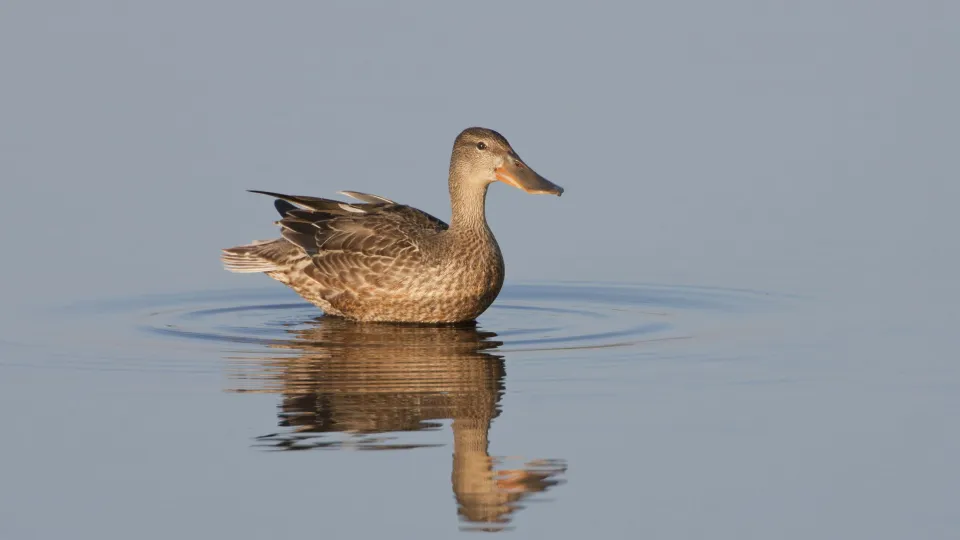
Living up to its name, the shoveler has a large and distinctive shovel-like bill which it uses to feed at the surface of the water. It breeds in small numbers in the UK, but is widespread in winter.
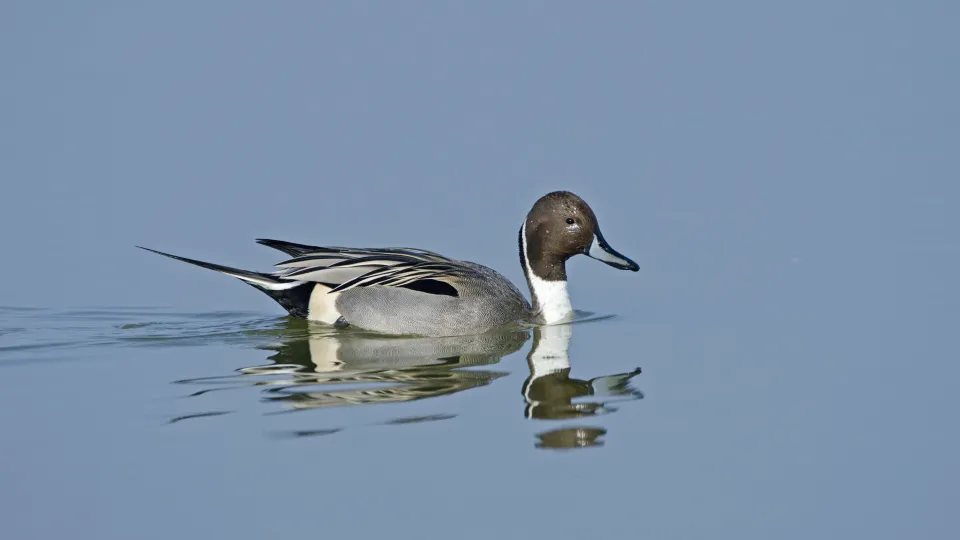
When spotting the pintail in winter, look out for the fabulous, long tail feathers that characterise it. This dabbling duck feeds at the water's surface, rather than diving for food.
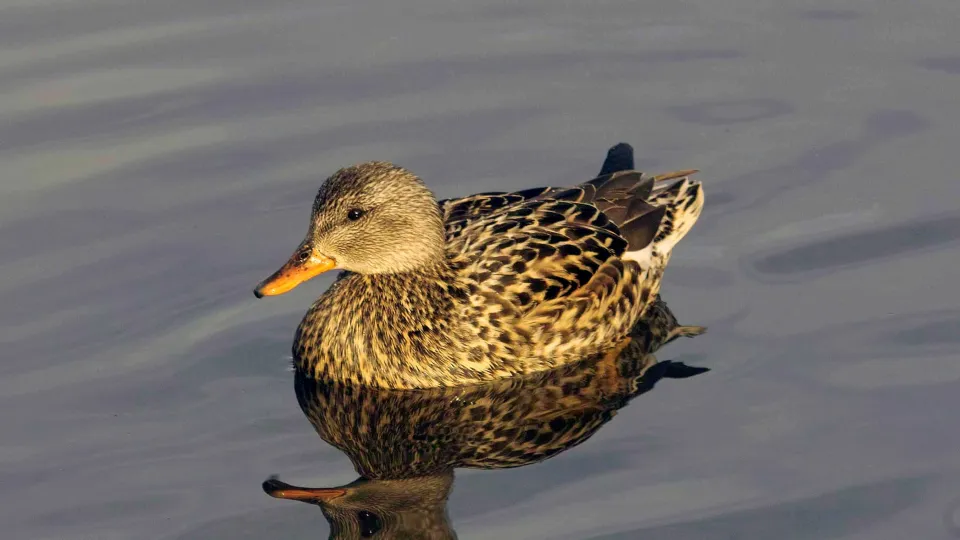
The gadwall is a dabbling duck, feeding at the surface of shallow water by 'upending' - putting its head down and its bottom up! Only a small number of gadwall nest in the UK, but large numbers winter here.
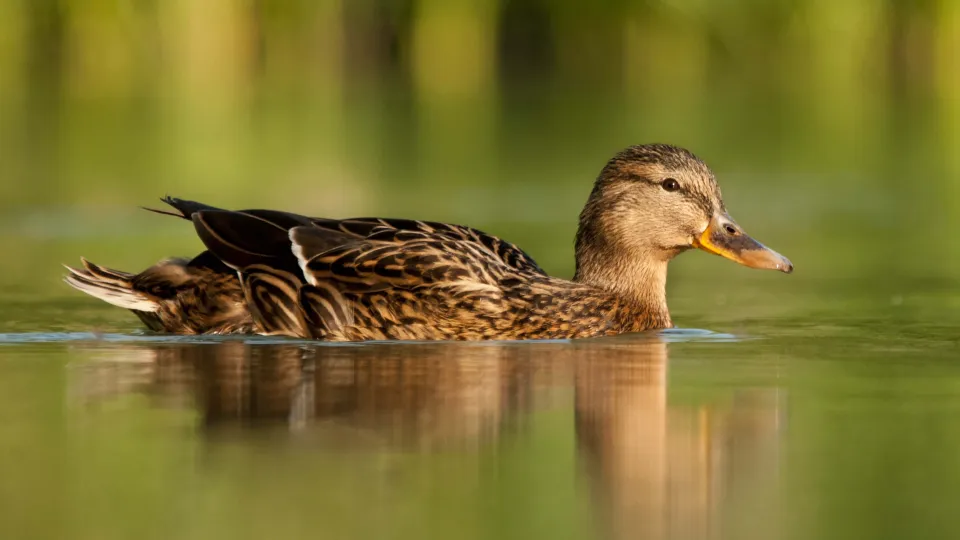
The much-loved mallard is our most familiar duck, found across town and country. If your feeding the ducks please don't feed them bread - it's not good for them! Instead, they love eating sweetcorn, lettuce, oats and seeds.
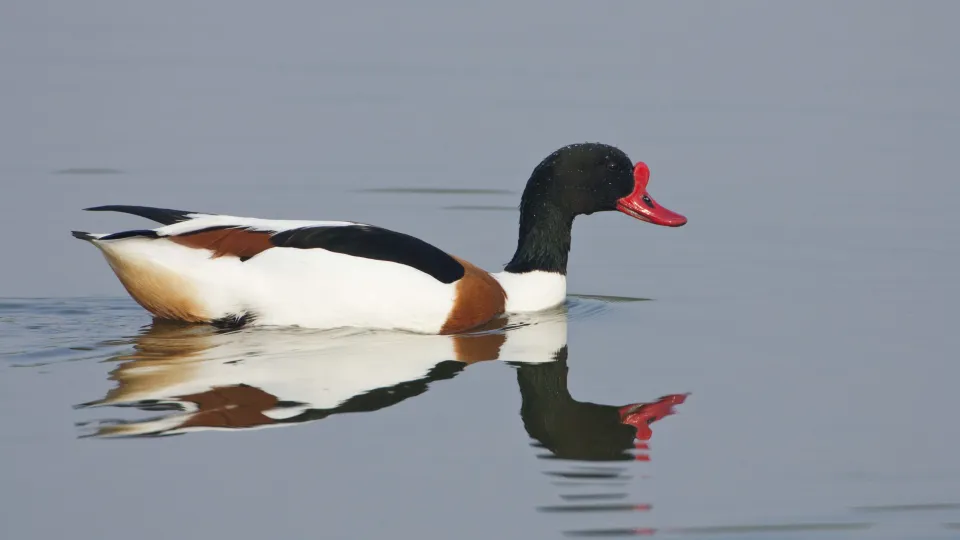
One of our largest ducks, the shelduck is a handsome creature with a dark green head, red bill and chestnut-brown band across its white body. Look out for it around most of our coastline, particularly in winter.
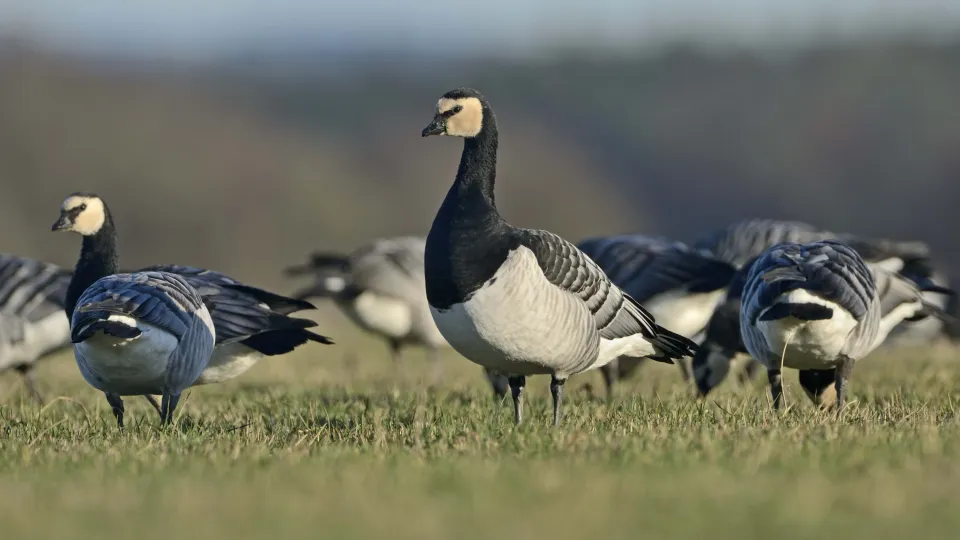
The black-and-white barnacle goose flies here for the 'warmer' winter from Greenland and Svalbard. This epic journey was once a mystery to people, who thought it hatched from the goose barnacle at sea!
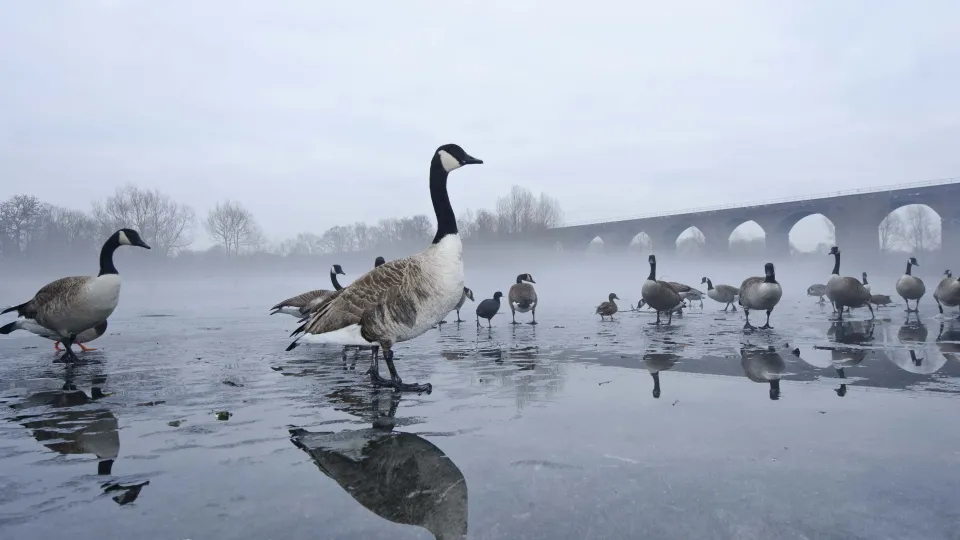
The Canada goose is our most familiar goose, although it is not actually native to the UK. A common and bold bird, it can be found around most parks, lakes, reservoirs and gravel pits.
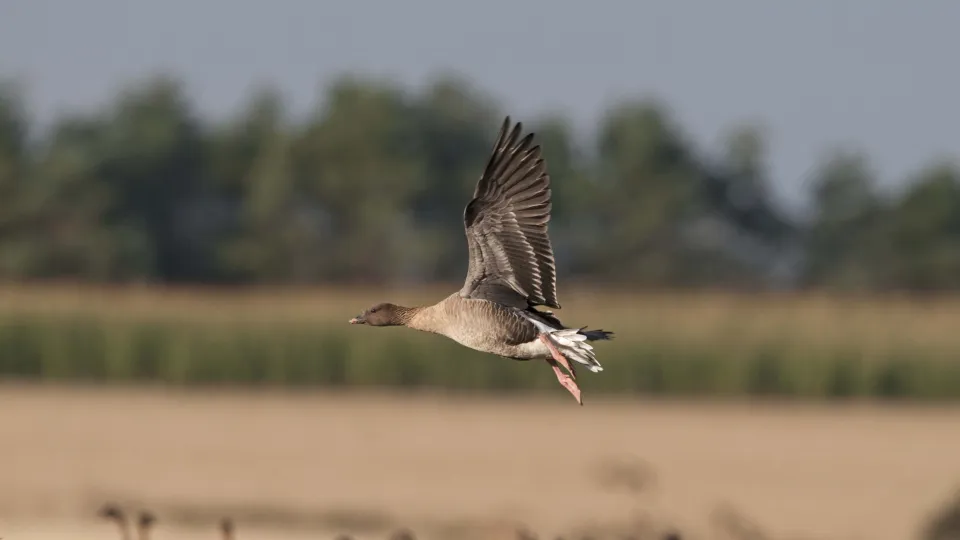
The pink-footed goose is a winter visitor to the UK, feeding on our wetland and farmland habitats. About 360,000 individuals spend the winter here, making it a really important destination for this bird.
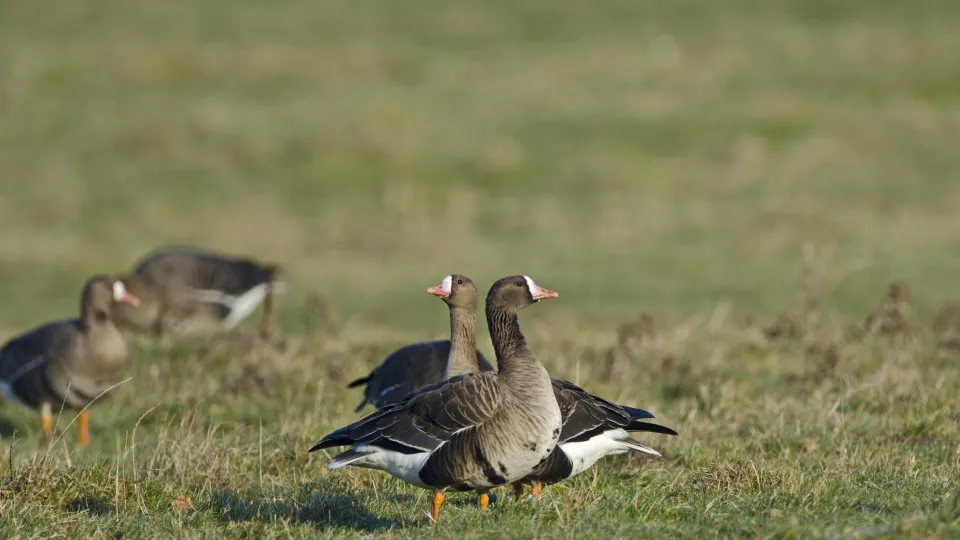
The white-fronted goose lives up to its name - look out for the white patch on its forehead and around its bill. It does not breed in the UK, but flies here from Greenland and Siberia for the 'warmer' winter weather.